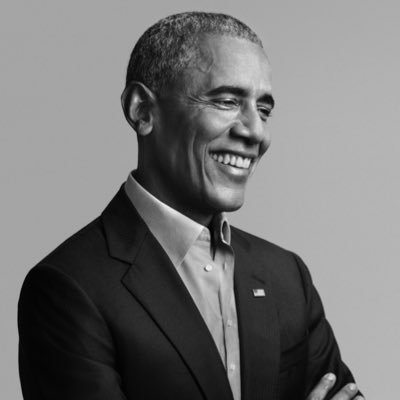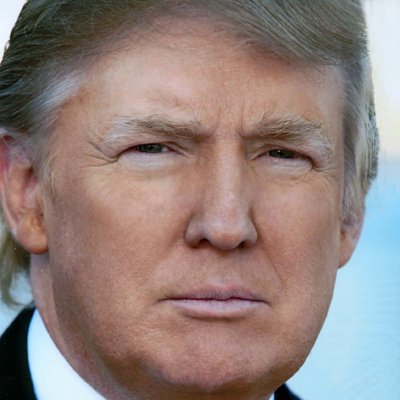

rick awsb ($people, $people)
@rickawsb
瞎读书,乱解释,买啥亏啥,宏观小学生,政经评论外卖员,正在ai中慢慢迷失自我,crypto holder, defi farmer, not financial advice 非投资建议
12.1K Following 133.9K Followers
美国政府已经停摆两周了,大家生活一点都没有受影响
让大家不禁怀疑,我们tmd交这么多税,养着政府干嘛?
川普应该大规模裁撤政府员工,70%起
0
0
196
1.6K
88
95%的山寨币都是垃圾
因为制造这些垃圾的整个体系里每一个角色,从项目方、伪用户(撸毛)到交易所的目的都只有一个:
给自己找到接盘的人
所以这轮没有山寨牛,实在是自作孽
但这并不是说山寨没有希望
恰恰相反,如果一个项目能有用户和真实的应用场景,很容易引起市场追捧
Show more
0
0
0
1
0
困境反转,戴维森双击,我觉得目前市场上可能没有任何标的比intel更明确的
nfa dyor
0
0
7
31
4
4月解放日之后,取关了一堆在大跌之后还看空的“老师”
5月到9月,屏蔽了一堆天天看美联储而不看ai基本面喊着经济要衰退的“老师”
然后我的胜率就开始好起来了
这次要屏蔽在周末喊中国限制稀土,美股芯片板块要完蛋的老师
加速正在被加速
英伟达才是美联储
没人能阻挡ai,川普不能,那谁也不能
Show more
0
0
3
37
0
《中国稀土管制和川普的反制:守卫自由贸易的行动如何加速自由贸易秩序的终结》
中国自认为手握全球90%稀土生产的"核武器",希望用来帮助自己保住自由贸易的红利,
却不知每一次稀土管制升级,都在为那些早已谋划脱离现有自由贸易体系束缚的新右翼权力精英们,铺设通往新秩序的台阶。
这不是一场中国能够赢得的战争。因为中国的每一次反击,都在让战争的更接近对手希望的结局。
一、中国稀土武器化,开启美国“新资源寡头”的黄金时代
当中国在4月宣布稀土管制时,欧美金融工业巨头们的反应即有恐慌,但更多的是喜悦。
对于由川普的铁杆支持者Chamath Palihapitiya投资的MP Materials而言,中国的稀土管制恰似天降甘霖——完美地验证了他们向五角大楼兜售的核心叙事:"供应链就是国家安全"。
稀土管制导致F-35战斗机关键部件交付延误,欧洲"下一代战斗机"成本预估上涨。这种"武器化"供应链的行为,为美国新右翼资本和资源复合体创造了一个价值数千亿甚至数万亿美元的市场真空:
美国防部2025年新增稀土替代研发预算200亿美元,其中60%流向私营国防科技公司
欧盟《关键原材料法案》投入3000亿欧元,推动"国防工业私有化2.0"
日本自卫队稀土本土化项目,由三菱重工与美国新军工联盟共享技术
这正是教科书级别的信任死亡螺旋的案例:中国管制→欧美恐慌→自主产业投资暴涨→新军工寡头获利→地缘紧张加剧→中国进一步管制。
每一次循环,各国在消耗外汇储备和财政预算,而提前掌握资源的私营巨头,则在悄然暴富。
二、稀土市场控制权的悄然换手
川普政府推行的"保护费经济学",在稀土危机中找到了除军事威胁以外的又一个完美载体。美国向盟友兜售的不再只是爱国者导弹,而是一整套"稀土安全解决方案":
澳大利亚Mount Weld矿扩产——由美国资本控制,2030年供应全球20%
加拿大Nechalacho项目——五角大楼提供15亿美元贷款担保
格陵兰Kvanefjeld矿,全球中国以外最大的重稀土矿——美国公司控制
这是一种新型的资源保护费模式:你付钱,我帮你摆脱对中国的依赖。
三、对多国开战,让多国从囚徒困境到协调博弈的转变
在稀土管制之前,欧美日韩在对华政策上处于"囚徒困境":每个国家都想让别人制裁中国,自己继续赚钱。
中国的武器化稀土的行为,以一种粗暴但高效的方式,将博弈结构从"囚徒困境"转变为"协调博弈"——要么一起脱钩,要么一起被宰:
G7国家对华政策协调度在稀土方面高度一致:
美欧日首次在WTO联合起诉中国稀土管制(2025年6月)
Quad(美日印澳)关键矿产联盟计划将覆盖率从40%升至75%
跨国稀土企业(如Lynas)在澳洲开采、马来西亚加工、向全球销售
印度加入稀土欧美澳日同盟:启动“国家关键矿产使命”,2030年自给率目标30%,并与澳/美/日签署协议
未来可以预期,将会有更多的跨国协同。
四、稀土管制的有效期与新秩序的必然
博弈论真相:稀土武器的"保质期"
当前,中国稀土管制的效果达到峰值:
缺稀土的各国成本增加20-100%,甚至面临工业停产
中国控制90%全球供应
但市场的调节产生了一个致命悖论:中国每一次使用稀土武器,都在加速这个武器的失效。
因为每一次使用,都在让其他国家追加对稀土的投资。这让稀土的去中国化,从之前预计的10年,缩短到现在的7年,接下来随着资本的进一步投入,还很有可能进一步缩短:
2027-2028年,中国以外供应链比率达25%,关键供应基本保证
2030年,中国以外供应比率达50%,管制变成杀敌一千自损八百的游戏
五、管得了稀土,失去了信任
稀土出口管制作为地缘政治和贸易战工具,长期来看,不仅冲击各国对华贸易信任,引发多国商界态度转变,加速全球供应链去风险化。
印度商务部长称:全球需共同应对中国管制。
各国对中国供应链的态度,从“信任”转向“不信任”,推动各关键供应链多元化与本土化。
日本企业(如Toyota)缩短对华合同周期,韩国电子产业增加囤货和供应链多元化,欧盟《关键原材料法案》加速矿山开发。
欧澳印美日韩,各自就电池,光伏等有可能被中国威胁的产业链,都推出了各自的扶持补助政策。
更深远的影响是,在失去信任的贸易关系当中,关税也更容易成为常用的选项:
德国企业(如Siemens)已经开始呼吁对中国的“对等措施”。
印度新的PLI方案补贴下,计划2026年对华进口加征更高关税,以支持“国家关键使命”。
日本与韩国,计划对新能源征收联合关税
六、注定的结局
现实的两难之处在于,试图用稀土管制来捍卫的自由贸易秩序,恰恰因这种管制而加速崩塌。
这场博弈从一开始就注定了结局,届时,管制者失去的不仅是稀土、光伏等多个产业的定价权,更是在全球贸易体系中最后的信任资本。
川普和他的新右翼盟友们早已看穿了这个结局。他们不需要"赢得"稀土战争,只需要让中国持续出牌。
川普打响了颠覆自由贸易体系的第一枪,稀土管制为这个体系的坟头添上最后一铲土
Show more

0
0
104
406
124
突发:英伟达投资openai1000亿美元,用于部署10吉瓦AI数据中心
nvda盘中拉近5%
数据中心上下游,芯片制造,液冷,能量电池,全部起飞
英伟达这招非常聪明:
锁定GPU需求,确保OpenAI数百万GPU采购,巩固英伟达在AI算力市场的领先地位。 同时锁定openai,限制其转向tpu的可能
分享AI增长红利,并下注agi:通过股权投资分享OpenAI估值增长(当前估值5000亿美元),类似微软模式。
应对竞争:对抗谷歌TPU、AWS Trainium等ASIC威胁,维持GPU+CUDA生态主导地位。
抢占算力市场:优化OpenAI模型与英伟达硬件的适配,通过与OpenAI、微软、Oracle等合作(如Stargate项目),提升推理效率和能效,扩大AI基础设施市场份额。
市场信号:展示英伟达现金流实力(2026财年Q1营收441亿美元),应对反垄断审查风险。
ai大国竞争:nvda在中国宣布限制几个产品购买之后,大举投资美国ai,将通过海量资本投入对中国的ai企业带来两难困境-- 追赶,需要巨额支出,限制于中国资本市场融资能力;不追,差距会拉大。
可能受益板块及标的:
数据中心基础设施:Super Micro Computer、Dell、HPE因服务器需求激增受益。
半导体供应链:台积电(英伟达GPU代工)、ASML、Applied Materials、Lam Research因芯片生产需求增长。
云服务与AI基础设施:微软(Azure)、Oracle(Stargate项目)、AWS因AI算力需求提升。
能源与冷却技术:Vertiv、Eaton、Schneider Electric因数据中心电力和冷却需求增加。
网络设备:Arista Networks、Cisco、Broadcom因AI数据中心网络需求增长。
注:本人持有推文提及资产,观点充满偏见,非投资建议dyor
Show more

0
0
0
1
0
“那个(杀害查理的)年轻人,我原谅他。我原谅他,因为这是基督所做的,也是查理会做的。
对仇恨的回应不是仇恨。我们从福音中知道,答案是爱。。。爱我们的敌人。”
-- 柯克遗孀埃里卡·柯克的葬礼致辞
真正的宽恕是站在十字架下,承认人性之恶,却选择相信神性的善。”
—— 托马斯·默顿
《埃里卡·柯克的葬礼致辞全文》
感谢你们从世界各地来到这里,以纪念和庆祝我的查理。就在离这里几英里的地方,两年前的2023年美国节,查理在我们TP USA Faith活动中发表了一场演讲。查理喜欢即兴演讲,他非常擅长不带讲稿地表达。所以我个人并不知道他会说些什么。那天他选择谈论的是他对上帝旨意的顺服。他引用了他最喜欢的圣经经文之一,以赛亚书6:8:“主啊,我在这里,请差遣我。”
查理讲完后,我在后台见到了他,我和他交谈。我永远不会忘记那一刻。我说:“查理,宝贝,下次你说这句话之前,请先和我商量一下。因为当你说出这样的话时,这段经文有如此大的力量。”“主啊,我在这里,请使用我”——上帝会接受你的奉献。而祂确实对查理这样做了。
十一天前,上帝接受了我丈夫的完全顺服,然后召唤他到祂身边。查理最想做的事,不是按自己的意愿,而是遵行上帝的旨意。在过去的这11天里,尽管充满了痛苦,我从未像现在这样找到如此多的安慰。主祷文中的话语:“愿你的旨意成就。”在我的丈夫被谋杀的那一天,上帝的爱向我显现。
9月10日下午,我来到犹他州的一家医院,面对一件无法想象的事情——直接面对我丈夫被谋杀的遗体。我看到了结束他生命的伤口。
我感受到了你所能想象的一切。我感到震惊、恐惧,以及一种我从未知道存在的撕心裂肺的疼痛。
但还有别的东西。即使在死亡中,我仍然能看到我深爱的那个男人。我看到了他头上那一根我从未告诉他的白发。现在他知道了。对不起,宝贝,现在告诉你了。但我从未想告诉他。
我还看到了他的嘴唇上带着一丝极淡的微笑。这对我来说意义重大。这向我揭示了上帝在这场悲剧中的极大怜悯。当我看到那个微笑时,我知道查理没有受苦。医生告诉我,伤势是如此迅速,即使查理在手术室中被枪击,也无法挽救。没有痛苦,没有恐惧,没有折磨。
前一刻,查理还在做他热爱的事情——在校园里辩论、争论,为福音和真理而战,在一大群人面前演讲。然后他眨了眨眼,下一刻他就在天堂见到了他的救主,所有的天国奥秘向他显现。
在接下来的几天里,上帝的爱继续向我显现。第二天,在空军二号的停机坪上,我面对了乌莎·万斯,一位宝贵的女性。我握着她的手,坦诚地说,我不知道如何度过这一切。
她对我说了一些话。她说:“你知道,当你带着孩子坐飞机,在最后15分钟时,情况变得疯狂。孩子们不配合,玩具到处乱飞,每个人都在尖叫。你心想,我迫不及待想让飞机落地。还有15分钟就到。”她告诉我:“你会熬过这15分钟,然后是接下来的15分钟。”
乌莎,当时你可能没有意识到,但这番话正是我需要的。但最重要的是,在过去的十天里,上帝的怜悯和爱向我显现。
在查理被暗杀后,我们没有看到暴力、骚乱或革命。相反,我们看到了我丈夫一直祈祷在这个国家看到的:复兴。在过去的一周里,我们看到有人十年后第一次打开圣经;有人自童年以来第一次祈祷;有人一生中第一次参加教堂礼拜。
查理喜欢写日记,我提到这一点是因为他用日记记录重要的时刻和对他有影响的话语。他在日记中写道:“每次你做出决定,都会在你的灵魂上留下痕迹。”对那些刚刚做出决定、迈向灵性生活第一步的人,我想说,谢谢你们,欢迎你们。希望有一天你们回首时会意识到,这是你们人生中最重要的决定。因为它确实是。所有已经是信徒的人,你们的责任是引导这些人。不要轻视这个责任。浇灌他们信仰的种子,保护它,帮助它成长。
每天,查理去办公室时,他都会翻看他的联系人列表——我知道你们中有很多人受到过他的影响——他会发送当天的圣经经文。
他知道信仰是一种习惯。
你越活出信仰,它就越成长。
但也要知道,种子刚刚种下。在这样的时刻,敌人会最强烈地诱惑你。上帝永远在你身边,但你必须一次又一次地选择在基督的方向上标记你的灵魂。再次祈祷,再次阅读圣经,下周日和之后的周日去教堂,摆脱这个世界的诱惑和枷锁。做基督的追随者并不容易,也不应该是容易的。
耶稣说:“若有人要跟从我,就当舍己,背起他的十字架来跟从我。”
祂说祂会受逼迫,祂说我们也会受逼迫。
而查理知道这一点,他愉快地背着他的十字架走到了最后。
我想让你们知道,尽管查理死得太早,但他也已经准备好面对死亡。他没有拖延任何事情,没有什么太难或太痛苦的事情他不愿意去做。他离开这个世界时没有遗憾。他每一天都全力以赴。
我想让你们知道,查理虽然带着未完成的工作离世,但他没有未了的心愿。我会非常非常想念他。因为我们的婚姻和家庭是如此美好,至今依然如此。
查理一生中最伟大的事业是试图复兴美国家庭。当他与年轻人交谈时,他总是急切地告诉他们上帝对婚姻的愿景,如果他们敢于实践,会如何丰富他们生活的每一个部分,就像它丰富了我们的一样。
有人曾问我,查理经常出差,我们是如何保持婚姻如此牢固的。我们的小秘密是情书。每个星期六,查理都会为我写一封情书,从未间断。在每封信中,他都会告诉我那周的高光时刻,表达他对我和我们孩子的感恩。信的结尾,他总是会问一个最美妙的问题:“请告诉我,我怎样才能更好地作为你的丈夫为你服务。”
查理完美地理解了上帝对基督徒丈夫的角色定位——一个为了服务而领导的男人。
对全世界观看的男士们,接受查理的挑战,拥抱真正的男子气概。
为你的家庭坚强勇敢。
爱你的妻子,带领她们。
爱你的孩子,保护他们。
做你家庭的属灵领袖。但请成为一个值得妻子追随的领袖。你的妻子不是你的仆人,不是你的员工,也不是你的奴隶。她是你的帮手。你们不是对手,你们是一体的,为上帝的荣耀共同努力。
我是查理的知己,是他的宝库,是他最亲密、最信任的顾问,也是他最好的朋友。我深深地爱他,赋予他力量,因为他对我的爱激励我成为更好的妻子。每一天他都尊重我。我祈祷自己能成为上帝需要的妻子,为我的丈夫服务。
女士们,我也对你们有一个挑战。做有德行的女性。
我们的力量在于上帝为我们角色所设定的设计。
我们是守护者,是鼓励者,是维护者。守护你的心,你所做的一切都从中流出。如果你是母亲,请认识到这是你最重要的使命。
在我们家,因为查理经常出差,我们尽量随他一起旅行。但我确保当查理工作回来时,家是他远离世界烦恼的神圣避风港。我不会因为他离开太久或太晚回家而让他感到愧疚。我总是告诉他,家在这里等着你,会为你准备好。我把家变成他一出差就想尽快回来的地方。
我们之间没有计较得失。我们是一个团队,为同一个使命而努力。我从不想成为站在查理与上帝为他准备的任务之间的障碍。我知道查理也会尽全力帮助我做到同样的事情。我与查理的婚姻是我生命中最美好的东西,我知道对他来说也是如此。他希望每个人都能体验到这种喜悦。
这就是上帝对婚姻设计的美妙之处,每个人都可以体验到。未来我会无休止地谈论这个。但查理的使命,首要针对的是那些未婚的人。他为自己的组织取了一个好名字,他知道美国,尤其是年轻人,出了问题,他们需要一个新的方向。
查理热切地想接触并拯救西方的“迷途男孩”——那些感到没有方向、没有目标、没有信仰、没有生活理由的年轻男性,那些浪费生命在消遣上、被怨恨、愤怒和仇恨吞噬的男性。
查理想帮助他们。他希望他们在Turning Point USA找到归属感。当他去校园时,他想向他们展示一条更好的道路和生活,就在那里等着他们去抓住。他想让他们看到这一点。
我的丈夫,查理。他想拯救像那个夺走他生命的年轻人一样的年轻人。那个年轻人,那个在十字架上的年轻人,我们的救主说:“父啊,赦免他们,因为他们不知道自己在做什么。”那个年轻人,我原谅他。我原谅他,因为这是基督所做的,也是查理会做的。对仇恨的回应不是仇恨。我们从福音中知道,答案是爱,永远是爱。
爱我们的敌人,爱那些逼迫我们的人。
世界需要Turning Point USA。它需要一个团体,指引年轻人远离痛苦和罪恶的道路。它需要引领人们远离这个世界和来世的炼狱。它需要年轻人被引导向真理和美。我今天向你们承诺,我们的每一项工作都将变得更伟大。
我非常荣幸成为Turning Point USA的新任首席执行官。我不会轻视这个责任。查理和我在目标上是合一的。他的激情是我的激情。现在他的使命是我的使命。
Turning Point USA通过查理的愿景和努力所建立的一切,我们将通过他的记忆的力量使之壮大十倍。分会将增长,数千个新的分会将创建。USA Faith将增加数千名新牧师和数十个教会团体。是的,校园活动将继续,我们将继续举办辩论和对话。
我们宪法的第一修正案是最人性化的修正案。我们天生是会说话的生物,天生是有信仰的生物,第一修正案保护我们这两项权利。任何刺客都无法阻止我们捍卫这些权利。永远。因为当你停止对话,停止沟通,就会发生暴力。
现在我站在这里,看着挂在体育场里我丈夫的美丽照片,我想起了13年前的查理。那时我还没遇见他。他才18岁,刚刚高中毕业,口袋里没有一分钱,手机里只有一个联系人,在共和党全国委员会的走廊里跑来跑去。看到他的人说他不知道自己在做什么,但他知道。他完全知道自己在做什么。
他要改变世界,而他做到了。
查理的一生是这个国家的转折点,是一个奇迹。让他的生命的奇迹也成为你的转折点。选择祈祷,选择勇气,选择美,选择冒险,选择家庭,选择信仰的生活。最重要的是,选择基督。我爱你,查理,宝贝。我会让你骄傲。
愿上帝保佑你们所有人,愿上帝保佑美国。
Show more

0
0
0
0
0
《混乱是阶梯,普京是川普切断中欧班列的阶梯?》
9月19日,三架俄罗斯战斗机闯入爱沙尼亚领空,引发北约东翼国家尤其是立陶宛和拉脱维亚的强烈反应。
巧的是,中欧班列正因波兰关闭白俄罗斯边境而陷入中断,正高度依赖立陶宛和拉脱维亚的绕行路线。
普京是否在为川普切断中欧贸易提供“神助攻”?
一、事件背景:俄罗斯挑衅与北约的强硬回应
9月19日,俄罗斯三架MiG-31战斗机飞越爱沙尼亚领空,北约迅速出动意大利F-35战斗机及芬兰、瑞典战机拦截。
爱沙尼亚外长称之为“前所未有的厚颜无耻”,启动北约第4条磋商(本月第二次,波兰9月10日因俄无人机入侵也启动过,历史上总共启动过9次)。
北约秘书长马克·鲁特(Mark Rutte)警告,俄罗斯的“鲁莽模式”正在加剧。
此次侵犯是今年第四次,紧随俄白“Zapad-2025”军演(包含核武器演练),被视为普京测试北约第5条(集体防御)的延续。
波兰外长西科尔斯基(Radosław Sikorski)将其与9月10日俄无人机入侵波兰(北约首次击落俄资产)相连,称其“故意升级”,推动更严格的“交战规则”。
立陶宛和拉脱维亚呼吁增派防空资源,强化波罗的海空中巡逻。(看看地图就知道,为什么立陶宛和拉脱维亚对入侵爱沙尼亚领空一事反应如此强烈)
俄罗斯国防部否认侵犯,坚称飞机在“中立水域”执行计划飞行,但北约和欧盟一致认定这是挑衅。
事件恰逢王毅因波兰禁行中欧班列访波的三天后,波兰大概率更能短期重开中欧班列,同时,更加会加剧班列绕行线路 — 立陶宛和拉脱维亚的风险。
二、中欧班列的脆弱性与波罗的海危机
中欧班列2025年前三季度开行14689列,货值超294亿美元,但波兰因“Zapad-2025”和俄无人机入侵关闭边境,导致90%班列滞留。目前,班列依赖立陶宛(Grigorovshina口岸)和拉脱维亚(Kamennyj Log)绕行,通过波罗的海港口(克莱佩达、里加)转海铁联运,缓解30-40%货量。但绕行成本上涨20-30%,口岸拥堵严重(卡车排队超400辆)。
中国外长王毅9月15-16日访波,给出包括稀土在内的多个大礼包,试图重开边境,但波兰坚持“安全优先”。爱沙尼亚事件加剧波罗的海三国的安全焦虑,若立陶宛和拉脱维亚效仿波兰关闭通道,班列将接近100%中断,时效延长至海运水平(30-40天)。
三、普京的动机:地缘政治还是经济误判?
普京为何在此时挑衅?
1. 测试北约迫使其分散资源:MiG-31可携带“匕首”高超音速导弹,侵犯爱沙尼亚领空旨在挑战北约的反应速度和东翼团结,分散其对乌克兰的支持(美欧正讨论新军援)。事件发生于北约“Eastern Sentry”任务启动后,普京试图通过低强度冲突制造不确定性。
2. 回应西方制裁:欧盟正推动第19轮制裁(针对俄石油和无人机),北约加强东翼部署(如波兰的F-35)。普京通过空中挑衅“反击”,同时迎合国内民族主义情绪。欧盟外交负责人卡娅·卡拉斯(Kaja Kallas)警告,普京“一次又一次升级”。
3. 对华战略博弈:中欧班列是中俄经济合作的支柱(2025年货值超3000亿元人民币,俄铁路收入约30亿美元)。普京可能通过制造波罗的海危机,间接向中国施压,变相告诉中国俄罗斯手里的筹码,以进一步威逼利诱中国强化中俄对抗西方的“统一战线”。
四、特朗普的阳谋:切断中欧班列的隐形推手?
9月13日,川普在Truth Social平台上发布了一封自称是“致所有北约国家及全世界的信”。信中要求北约各盟国一起对俄罗斯征收二级关税,所谓的二级关税,实际上是针对从俄罗斯进口大量石油的中国征收高额关税。
在这个当口,如果俄罗斯和北约的关系越紧张,显然就会越有利于北约各国更加支持二级关税或者其他的对俄甚至中国的进一步关税和贸易制裁。
参考俄乌开战初期,俄欧输油管线被神秘破坏,这次的中欧班列停开,是不是有那么一点历史在重复的意思?
五、普京对川普的“神助攻”:地缘政治与供应链的博弈
普京侵犯爱沙尼亚领空的挑衅行为,表面上是针对北约的战略试探,却可能无意中为特朗普的贸易战“助力”,通过加剧中欧班列危机削弱中国对欧出口。波兰的边境关闭和波罗的海三国的安全焦虑已使班列命悬一线,若立陶宛和拉脱维亚跟进限制,中欧供应链将面临重大冲击。
对普京来说,一次入侵可能只是军事政治的试探,但长期冲突则会让紧张不断升级,无论对俄罗斯,波兰,还是波罗的海三国,安全毫无疑问都会优先于利益。
而特朗普的去全球化的贸易政策,尤其是撕裂中欧贸易格局的策略则可能从中受益。
混乱是阶梯,中欧班列的停运和即将到来的中欧贸易乱局,是川普进一步实现打碎现有自由贸易格局战略的阶梯。
无奈或者有意,普京将不得不不断的为混乱火上浇油,成为川普制造中欧贸易乱局的阶梯。
喜欢本文?请粉赞转三连
图:波兰正在为边境铁路加路障
Show more

0
0
9
30
6
@alwriterla 他好像小孩在美国读书吧,签证收紧对他有影响
都是屁股决定脑袋
人艰不拆,算了
0
0
0
1
0
《颠覆式创新的下一个对象 --- 主权国家》
再谈google的ai agent支付和web3中的暴富机会
一个产品或服务最初在一个细分市场中扎根,然后无情地向上移动,最终取代了成熟的竞争对手。
--- 《颠覆式创新》,克里斯坦森
正文:
google的ap2 ai agent支付协议,和之前的agent economies的论文,会进一步加速agent和链上经济的融合,通过agent,加速非实名的协议部署,加强隐私,也就加强了个人资产从国家监管中逃逸的能力。
这将会加速金融去中心化的风暴的到来。
这场风暴所冲击的,并非仅仅是某个行业或市场,而是现代主权国家。
这一技术组合作为终极的“颠覆式创新者”,将从根本上瓦解国家体制的权力基石,并可能触发一场不可逆的经济大迁徙,最终开启法币体系的“死亡螺旋”。
一、 主权国家的“商业模式”及其致命弱点
要理解颠覆,必先解构“在位者”。现代主权国家,本质上是一个提供全面服务的垄断性“企业”。
其核心产品是安全、秩序、公共物品(基础设施、教育)和社会保障。
其盈利模式主要依赖税收(所得税、资本利得税、消费税)和铸币税(垄断货币发行权)。
其护城河,即这一切得以运转的根本,并非法律或民意,而是两项核心能力:对合法暴力的垄断,以及对经济活动的有效监控。
关于前者,ai、尤其是deepseek为代表的开源ai的能力的不断增强,将极大增加国家垄断暴力的难度。因为民众使用ai制造武器的门槛极大降低。
后者——监控能力——是其商业模式的“阿喀琉斯之踵”。一个无法有效追踪谁拥有什么、谁交易了什么的政权,其税收系统将形同虚设,整个财政大厦也将随之动摇。而这,正是颠覆式创新者们攻击的目标。
二、 金融防火墙的溶解剂 --- 链上金融及隐私协议
隐私协议(如Monero、Zcash及各类零知识证明技术)始于被主流金融(国家“正规产品”)所忽视的边缘市场——为密码朋克和自由主义者提供“绝对的交易隐私”。
在主流用户看重的易用性、速度等指标上,它一度表现拙劣;但在“抗审查”和“隐私性”这一边缘指标上,它却做到了极致。
随着技术成熟和外部环境(如恶性通胀、资本管制)的变化,隐私协议正在“向上移动”,开始服务于主流用户的核心需求:财富保值和经济自由。
而更加广泛的隐私协议的普及,将逐步溶解国家赖以为生的经济活动监控能力,从而瓦解其税收根基。
然而,仅靠人类开发者,截止目前,尽管进展并不缓慢,但并未实现爆发式增长。开发者需要时间、资金,并且他们自身也是国家机器可以定点清除的“弱点”。
比方说tornado cash的开发者,直到现在,还在跟美国政府打官司。 但是,AI Agent的出现,将改变这一切。
三、 链上AI Agent引爆协议开发奇点
如果说隐私协议是武器,那么能够自主开发和部署软件的链上AI Agent,就是自动化、匿名化、永不疲倦的“军工厂”。它从供给和需求两侧,同时引爆了这场颠覆。
1. 供给侧革命:从“稀缺人才”到“无限创造”
AI Agent彻底打破了隐私协议开发的“人力瓶颈”。一个经过训练的AI Agent可以7x24小时进行密码学研究、代码编写、漏洞审计和协议部署。这将带来隐私技术的“寒武纪大爆发”。
更致命的是,AI Agent可以实现**“无主”部署**。它可以用匿名加密货币支付Gas费,将自己开发的代码部署到链上,成为一个没有法人、没有国籍、无法被逮捕的自治实体。
国家的打击目标从“少数人类开发者”,变成了“无数匿名的、AI驱动的、代码即法律的自治系统”。
这在战略上近乎无解。
2. 需求侧革命:从“复杂工具”到“无感体验”
AI Agent将彻底抹平普通人使用隐私工具的技术鸿沟。未来,用户只需对自己的个人AI Agent下达一个“意图”,例如:“帮我私密地支付一笔款项”。
Agent会自动选择并执行最优的隐私路径。当保护财富变得像发一条信息一样简单时,阻碍大众采纳的最后一道心理和操作壁垒便不复存在。
四、 不可避免的后果:经济大迁徙与法币的死亡螺旋
当“零风险”避税的技术前提(由AI Agent和隐私协议共同创造)达成时,一场基于纯粹理性选择的经济大迁徙将不可避免地发生。
第一波浪潮:核心参与者 (总人口的20%-30%)自由职业者、小企业主和投资者,他们对税负最敏感,业务模式最易切换,将率先、也是最彻底地迁入这个平行的、低税收的加密经济体。国家财政初现危机。
第二波浪潮:主流跟随者 (总人口的30%-40%)在AI Agent的加持下,加密工具变得极其易用。有额外收入的工薪阶层和普通市民,会将其投资、副业等收入转移至链上。此时,国家税基开始系统性崩塌。
第三波浪潮:法币的“基本盘” (总人口的30%-40%)因技术、认知或道德惯性而留守在传统体系的人,构成了国家最后的税收来源。
在整个过程中,现有的国家体制,是最后的加速者。
因为当税收损失达到不可持续的程度,而国家又失去了有效的监控和执法能力时,它只剩下最后一个选择:对还能课税的人群进行更重的课税。
这便启动了万劫不复的“死亡螺旋”:
此举惩罚了忠诚,打破了部分“基本盘”人群的惯性,迫使他们加速迁出。
税基进一步缩小,财政危机加深。
国家开启新一轮更重的增税……
这个负反馈循环,一旦启动,无法逆转。
五、推动非暴力不合作带来的暴利
ai agent日益增强的能力,将解决了开发者本身的安全和隐私问题,让他们更方便的匿名发布代码,这会创造一个强大而隐秘的激励闭环:
使用ai agent匿名开发新的隐私协议的人,他们可以更安全的从他们的开发中获益。
这将加速更多的隐私协议被开发出来,在此过程中,也将创造更多的亿万富翁。
结论:个人从主权国家的逃逸不断加速
这个由AI Agent和隐私协议驱动的行业增长,而是对现有权力结构的一次彻底的颠覆。
其最终的均衡态,是一个《主权个人》书中描述的二元化的世界:
一个高税负、增长停滞、由少数“基本盘”维系的传统法币经济体;
以及一个低税负、充满活力、由代码和市场规则主导的平行加密经济体。
届时,国家将从一个全能的权力中心,退化为一个仅为部分人口提供基础服务的供应商,其执行大规模公共政策和投射全球影响力的能力将被根本性地削弱。
剩下的问题是,你,亲爱的读者,要参加这场运动获取暴利吗?
喜欢本文?
别忘粉赞转三连,以传播思想,做多加密
Show more

0
0
18
205
56
刚刚:马云的云锋金融正式获批向客户提供虚拟资产交易服务
云锋金融将可为零售及专业投资者提供虚拟资产交易服务,客户可在云锋金融的交易平台直接交易数字资产(如比特币、以太币等)。
看来,马爸爸不光是要买以太坊,还要建交易所! https://t.co/7Wn9cqgwZG
Show more

0
0
23
233
57
在ai内容创作能力不断提升的时候,公共表达的重要性可能会越来越让位于小圈子但更高共识的信息网络
至少对我来说这一点开始变得明显
在传统社交网络时代,小圈子容易形成信息茧房,ai时代,这点越来越不用担心
ai就是打破信息茧房的最好方法,当然得会用,用好ai
Show more
0
0
0
1
0
为什么'少即是多'在ai带来的信息过载时代应该成为我们学习的一个重点?
这并不是说要减少学习,而是要在高强度学习的基础上,将信息精简成概念,概念抽象成短句甚至单词。
因为ai带宽无限,而人脑带宽有限。为了更充分利用人脑,我们更应该使用大词这类的概念抽象来充分利用人脑有限的带宽
Show more
0
0
1
0
0














